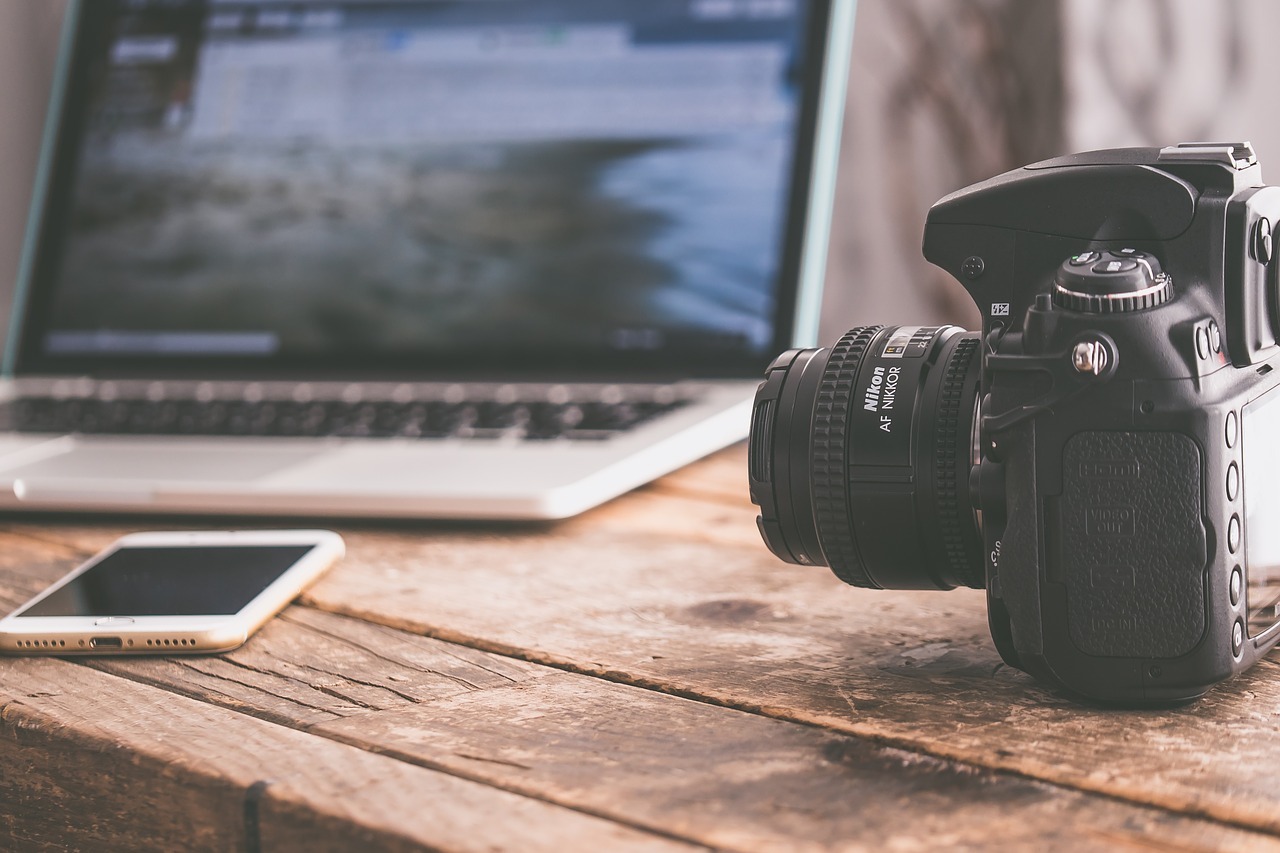Contemplating what travel gadgets to pack for your next trip can be quite a challenging and even overwhelming procedure.
After all, whether you’re packing light for a whirlwind business trip or heading out on a family vacation, bringing the right travel gadgets with you is of utmost importance.
To provide a solution to this pain point that travelers often encounter, we’ve created the following well-curated list with 15 must-have travel gadgets to pack for your next trip.
The items below will make your travel experience as seamless as possible to enjoy your trip to the fullest!
Without further ado, let’s dive into it!
1) Microsoft Surface Pro 9
Whether you are traveling solo, with friends, or for business purposes, bringing a laptop that meets your needs in terms of performance is highly important; after all, a laptop is a cornerstone equipment for a trip.
If you prioritize versatility, then you should consider the Microsoft Surface Pro 9.
Microsoft Surface Pro 9 provides solid performance features and at the same time, you have the option of using it as a laptop or a detachable tablet.
It comes with a vivid and bright screen and it’s only 0.37 inches thick and weighs less than 2 pounds.
Plus, it comes with up to 15.5 hours of battery life!
Amazon Star Ratings: 4.4/5
Price: £941.82
2) Audio-Technica M50x Professional Monitor Headphones
Another item that you should consider when creating your travel checklist is no other than a good pair of headphones.
The Audio-Technica M50x professional monitor headphones are a great choice either for listening to music while waiting for your next flight at the airport or joining a business meeting.
Their top features include:
- Professional-grade earpad and headband material that delivers more durability and comfort
- Circumaural design contours around the ears for ideal sound isolation in loud environments
- Detachable and foldable cable
Amazon Star Ratings: 4.7/5
Price: £129.00
3) Zero Grid Travel Neck Wallet
The Zero Grid travel neck wallet with RFID blocking is a small investment that can be a lifesaver!
Designed for safe international travel, this item is invaluable for crowded airports, buses, and trains.
Plus, the passport holder is virtually invisible to thieves!
If you want to keep your belongings safe when traveling, this item is for you.
Also, if the items are stolen from this travel neck wallet, you will be reimbursed up to $300.
Amazon Star Ratings: 4.4/5
Price: £30.85
4) Klearlook 4 in 1 Adjustable Phone Stand for Travel
During your flight, especially if it’s an international one, a multi-functional phone stand holder is your best bet for an enjoyable trip.
The Klearlook 4 in 1 adjustable phone stand for travel is a 4-in-1 cellphone phone holder that has:
- Clip-on Mode
- Clip-under Mode
- Stand/Desk Mode
- Handheld Mode
Furthermore, it’s made of high-quality ABS and metal and supports multi-directional adjustment for improving convenience and versatility.
Amazon Star Ratings: 4.4/5
Price: £11.94
5) Brita Stainless Steel Premium Filtering Water Bottle
Water is your number one priority to help you stay hydrated when exploring a new destination.
Instead of carrying plastic water bottles that are not suitable for sun exposure, you can switch to Brita stainless steel premium filtering water bottles.
Apart from sustainability reasons, this double-wall insulated bottle that stays cold for 24 hours has a wide range of features that set it apart such as:
- An easy-sip straw
- Built-in carrying loop for portability
- One-handed push-button lid
- Leak Proof design to avoid surprise spills
Amazon Star Ratings: 4.6/5
Price: £27.61
6) Fujifilm Instax Mini 12 Instant Camera
The FujiFilm Mini 12 Camera instantly produces image prints, fun and simple.
It includes 40 films designed for shooting photos with a press of a button and instantly printing them out with the Fujifilm Mini series.
Also, it comes in 5 different colors to choose from.
If you want to capture memories of a lifetime while traveling then this instant camera is a great pick for you; after all, it’s lightweight and you can easily carry it around with you.
So, don’t forget to include it in your next backpacking checklist!
Amazon Star Ratings: 4.6/5
Price: £85.84
7) DJI Osmo Mobile 6 Gimbal Stabilizer for Smartphones
Imagine this scenario; you’ve visited the destination of your dreams with your family, and you can’t wait to catch that breathtaking sunset or your child’s joyful play without missing a beat.
With DJI Osmo Mobile 6 gimbal stabilizer, you can wave goodbye to shaky footage!
This phone gimbal ensures super steady shots, even when you’re on the move.
Plus, it’s stain-resistant, lightweight, compact, and extendable.
Amazon Star Ratings: 4.6/5
Price: £117.53
8) SOKOO 230-Watt Step Down 100-220V to 110V Voltage Converter
The SOKOO 230-Watt step-down 100-220V to 110V voltage converter is a must-have for traveling worldwide.
It’s an international power converter/travel adapter suitable to use for more than 150 countries.
Also, it charges 6 devices simultaneously and comes with a safety built-in fuse and thermostat switch that will automatically shut off the 220V to 110V converter to ensure safety in case of overheating.
Amazon Star Ratings: 4.3/5
Price: £28.39
9) Solis Lite 4G LTE WiFi Mobile Hotspot
To experience seamless connectivity while hiking or enjoying your time under the sun, a portable WiFi hotspot such as Solis Lite 4G LTE WiFi mobile hotspot is a pocket-friendly companion that you didn’t know you needed.
With Solis Lite you have secure and reliable mobile WiFi hotspot coverage in over 135 countries, a built-in 4700 mAh Power Bank, and no SIM card is needed.
Amazon Star Ratings: 4.2/5
Price: £110.34
10) VersionTech mini handheld fan
If you’re headed somewhere warm, such as Lisbon or Barcelona, popular European destinations, especially in summer, one of the best travel gadgets to bring along is a mini handheld fan.
The VersionTech mini handheld fan charges quickly with an included USB charger, and also has three speeds to keep air moving and keep you feeling refreshed.
This fan can fold up to 180°and the USB cable can be charged with a computer, mobile power, power bank, and so on.
If you want a cool breeze blowing across your face, this gadget is for you.
Amazon Star Ratings: 4.7/5
Price: £31.72
11) Kidde Carbon Monoxide Alarm
Before jumping on your next mountain climbing adventure, you should consider investing in a carbon monoxide alarm.
The Kidde carbon monoxide alarm is a must-have for a safe adventure on higher heights, that you should definitely include in your bucket list.
Amazon Star Ratings: 4.7/5
Price: £16.50
12) Amazfit Bip 5 Smart Watch
The Amazfit Bip 5 smart watch is your go-to when it comes to traveling.
It provides accurate heart rate tracking, monitors your blood oxygen and stress levels, and provides alerts for abnormal readings.
Moreover, with this smartwatch, you can also:
- Check the weather before start exploring
- Set alarms and timers
- Track your sleep quality and stages
Plus, it’s able to last 10 days with typical usage, or even 26 days in battery saver mode.
13) Amazon Basics Portable Security Case
Keeping your belongings safe while traveling is paramount.
To do so you can invest in an Amazon Basics portable security case.
Some of its unique features include:
- Compact design made with premium anti-pry steel and a foam-padded interior
- Easily transportable for traveling and small enough to store discreetly
- Includes a zinc alloy combo lock for additional security
- Department of Justice Approved for excellent security quality
Amazon Star Ratings: 4.5/5
Price: £17.51
14) WACACO Cuppamoka Portable Drip Coffee Maker
Imagine being on vacation and wanting to get a boost of caffeine; how will you do it if there are no options nearby?
The solution to this problem is the WACACO Cuppamoka portable drip coffee maker.
Cuppamoka is a compact and lightweight travel pour-over coffee maker system that is going to save space in your bag.
Plus, it’s easy to use, can save you money, and keep your coffee hot in the double-wall stainless steel mug.
Amazon Star Ratings: 4.6/5
Price: £34.90
15) riemot Luggage Travel Cup Holder
Traveling while dragging your suitcases can be quite challenging, and you don’t usually have a free hand to hold a drink, especially with kids.
While it’s more of a travel accessory, the riemot luggage travel cup holder is your go-to solution if you want to free your hands on travel.
This cup holder has 3 pockets available, easy to use, compact, and durable.
Amazon Star Ratings: 4.4/5
Price: £7.99
Let’s wrap things up with some final words.
In a Nutshell
We hope we’ve got you covered with the best travel gadgets to consider before your next trip!
Traveling is an exhilarating experience that provides us with memories of a lifetime.
To make the most of it and live your trip to the fullest, apart from packing some essential travel gadgets, storing them somewhere safe is equally important.
So, before you decide to move forward with the trip, go find a location to store your luggage with Stasher, and you’ll never have to stress about the safety of your luggage and other valuable items ever again.


